Simons Investigators
- Email:
[email protected]
Simons Investigators are outstanding theoretical scientists who receive a stable base of research support from the foundation, enabling them to undertake the long-term study of fundamental questions.
The Investigator program has been discontinued.
Simons Investigators in Mathematics, Physics, Astrophysics and Computer Science
The intent of the Simons Investigators in Mathematics, Physics, Astrophysics and Computer Science programs is to support outstanding theoretical scientists in their most productive years, when they are establishing creative new research directions, providing leadership to the field and effectively mentoring junior scientists. A Simons Investigator is appointed for an initial period of five years. Renewal for an additional five years is contingent upon the evaluation of scientific impact of the Investigator.
Simons Investigators in Mathematical Modeling of Living Systems (MMLS)
This program aims to help the research careers of outstanding scientists working on mathematical and theoretical approaches to topics in the life sciences. A Simons Investigator in MMLS is appointed for five years.
Math+X Investigators
This program encourages novel collaborations between mathematics and other fields in science or engineering by providing funds to professors to establish programs at the interface between mathematics and other fields of science or engineering. A Math+X Investigator is appointed for an initial period of five years. Renewal for an additional five years is contingent upon the evaluation of scientific impact of the Investigator.
- Email:
[email protected]
- Email:
[email protected]
2023
Aaron Naber, Ph.D.
Northwestern University
Aaron Naber is a geometric analyst working on the regularity, singularity and topology of geometrically motivated equations. Naber has proved, together with collaborators, the rectifiable structure for singularities of geometric equations, including nonlinear harmonic maps, minimal hypersurfaces and spaces with lower Ricci bounds. This direction of analysis has led to the resolution of several open problems and conjectures, including the energy identity for Yang Mills and the L2 curvature conjecture. In another direction, Naber has settled, together with coworkers, a variety of open problem on spaces with lower Ricci bounds, including the codimension four conjecture and the Milnor conjecture.

Davesh Maulik, Ph.D.
Massachusetts Institute of Technology
Davesh Maulik works in algebraic geometry, with an emphasis on the geometry of moduli spaces. In many cases, this involves using ideas from neighboring fields such as mathematical physics, symplectic geometry and representation theory. His most recent work has focused on moduli spaces of Higgs bundles and various conjectures regarding their structure.
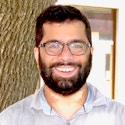
Jacob Tsimerman, Ph.D.
University of Toronto
Jacob Tsimerman is a number theorist working at the intersection of analytic number theory, algebraic geometry and Hodge theory. Much of his work has been on the subject of ‘unlikely intersections,’ which is a web of finiteness conjectures asserting that rational solutions should only exist for geometrically motivated reasons. With collaborators, he has recently proven the André-Oort conjecture. Tsimerman’s other work has included applying the methods of logic via o-minimality to Hodge theory, resulting in the development of powerful new methods and a proof of the Griffiths conjecture.
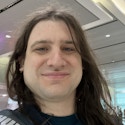
Vlad Vicol, Ph.D.
New York University
Vlad Vicol works in the field of nonlinear PDEs, focusing on models arising in fluid dynamics. His main contributions concern the regularity of critical active scalar equations, the vanishing viscosity limit in the presence of boundaries, the construction of turbulent weak solutions for both Euler and Navier-Stokes, and the analysis of multi-dimensional shock waves.
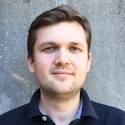
2022
Ivan Corwin, Ph.D.
Columbia University
Ivan Corwin works at the interface of probability and mathematical physics with a particular interest in exactly solvable probabilistic models and stochastic partial differential equations. Much of his work has focused around the Kardar-Parisi-Zhang equation and its universality class.

Nick Sheridan, Ph.D.
University of Edinburgh
Nick Sheridan's work centers around Kontsevich's homological mirror symmetry conjecture, which posits a deep relationship between symplectic topology and algebraic geometry. Working mainly on the symplectic side, he has developed tools for proving the conjecture and applied them to prove the conjecture in a number of cases, most notably the quintic threefold. In cases where the conjecture is established, Sheridan has given applications to enumerative geometry and symplectic topology.

Wei Zhang, Ph.D.
Massachusetts Institute of Technology
Wei Zhang is a number theorist working on automorphic representations and arithmetic geometry. He studies special values of zeta and L-functions and their relation to periods and heights of algebraic cycles on moduli spaces over global fields. A focus of his research is various high-dimensional generalizations of the Gross-Zagier formula. In particular, Zhang proposed the relative trace formula approach, which has led to many new deep questions relating the harmonic analysis on spaces with a group action over local fields to the arithmetic intersection theory on local Shimura varieties.

Chenyang Xu, Ph.D.
Princeton University
Chenyang Xu works in algebraic geometry, with an emphasis on understanding the structure of higher dimensional algebraic varieties. With his collaborators, Xu led the establishment of a rich algebraic K-stability theory for Fano varieties, crowned by the novel construction of projective K-moduli spaces parametrizing Fano varieties. The new algebraic method invented by Xu and his collaborators, largely built on the minimal model program in birational geometry, also provides a solution to the algebraic Yau-Tian-Donaldson conjecture for all Fano varieties, and a radically new singularity theory.
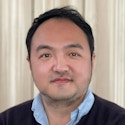
2021
Guido De Philippis, Ph.D.
New York University
Guido De Philippis works in geometric measure theory, calculus of variations and partial differential equations. His main interest is the understanding of regularity (or lack thereof) of solutions of geometric variational problems, ranging from minimal surfaces to free boundary problems. Recently, in collaboration with Filip Rindler, he obtained a fine description of the structure of the singular part of measures satisfying a linear partial differential equation (PDE) constraint. By suitably choosing the PDE constriction, the result allowed a number of open questions to be solved: extension of Alberti’s rank-one theorem to the space of bounded deformation (BD) functions, converse of the Rademacher theorem and structure of Lipschitz differentiability spaces.
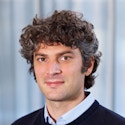
June Huh, Ph.D.
Stanford University
June Huh studies discrete objects using geometric methods. An unexpected relation between combinatorics and algebraic geometry found by Huh was used in his proof of Read's conjecture in graph theory. In recent works, he and his collaborators proposed a more general framework that tightens the connection between the two seemingly disparate fields. This led to proofs of several other long-standing problems in combinatorics, such as the ultra-log-concavity conjecture of Mason and the top-heavy conjecture of Dowling–Wilson.
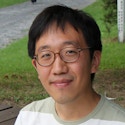
Lin Lin, Ph.D.
University of California, Berkeley
Lin Lin is an applied mathematician working in electronic structure theory. With collaborators, he has developed efficient, accurate and scalable algorithms in Kohn–Sham density functional theory, localization theory, many-body perturbation theory and quantum embedding theory. Several new methods have been adopted by electronic structure software packages widely used in quantum chemistry, quantum physics and materials science. Recently, Lin has contributed to neural network-based methods for accelerating molecular simulations, as well as quantum algorithms for solving high-dimensional linear algebra problems with applications to electronic structure calculations.

Assaf Naor, Ph.D.
Princeton University
Assaf Naor’s research focuses on analysis and geometry in high dimensions, with emphasis on understanding the structure of metric spaces, including the extent to which they can be realized in “nicer” geometries. He harnesses such insights for a variety of applications in several areas of pure mathematics (analysis, geometry, probability, combinatorics, group theory), and also in order to chart the possibilities and limitations of algorithms. Much of Naor’s work makes progress on the long-standing Ribe program, which is a web of conjectures and analogies between linear and nonlinear geometries that is inspired by a classical rigidity theorem of Ribe.
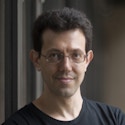
2020
Alexei Borodin, Ph.D.
Massachusetts Institute of Technology
Alexei Borodin is a professor of mathematics at the Massachusetts Institute of Technology. He studies problems on the interface of representation theory and probability that link to combinatorics, random matrix theory and integrable systems. His most recent work carries over the ideas and techniques of the theory of symmetric functions to solvable lattice models of statistical physics.
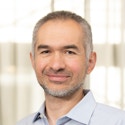
Ciprian Manolescu, Ph.D.
Stanford University
Ciprian Manolescu works in low-dimensional topology and gauge theory. His research is centered on constructing new versions of Floer homology and applying them to questions in topology. With collaborators, he showed that many Floer-theoretic invariants are algorithmically computable. He also developed a new variant of Seiberg-Witten Floer homology, which he used to prove the existence of non-triangulable manifolds in high dimensions.
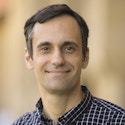
Fernando Codá Marques, Ph.D.
Princeton University
Fernando Codá Marques is a geometer. His recent work, in collaboration with André Neves, developed a full Morse theory for the area functional in closed Riemannian manifolds. The ideas introduced by them have revitalized the subject, leading to the discovery that closed minimal surfaces are ubiquitous in these spaces.

Zhiwei Yun, Ph.D.
Massachusetts Institute of Technology
Zhiwei Yun works at the intersection of representation theory, algebraic geometry and number theory. He uses ideas and techniques from geometry to solve problems in group representations and number theory. He has constructed the first examples of motives of type E_7 and E_8 and solved a related inverse Galois problem. In joint work with Wei Zhang, he has given a geometric interpretation of higher derivatives of L-functions for function fields.
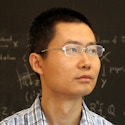
2019
Bhargav Bhatt, Ph.D.
University of Michigan
Bhargav Bhatt works in arithmetic algebraic geometry, with an emphasis on questions in positive and mixed characteristic. His research, which often draws on ideas from derived algebraic geometry, has also contributed to the solution of long-standing problems in commutative algebra and algebraic topology.
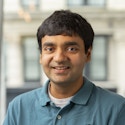
Xiuxiong Chen, Ph.D.
Stony Brook University
XiuXiong Chen is a leading figure in complex geometry with fundamental contributions to the field. He and his collaborators have made major breakthroughs and finally settled several long-standing problems. With S.K. Donaldson and S. Sun, Chen proved the stability conjecture (which goes back to Yau) on Fano Kähler manifolds. With B. Wang, Chen confirmed the Hamilton-Tian conjecture on the Kähler-Ricci flow on Fano manifolds. With J.R. Cheng, Chen found a groundbreaking a priori estimate for Kähler metrics, under assumptions on the scalar curvature, which involved a fourth-order differential equation and verified the fundamental Donaldson geodesic stability conjecture and the properness conjecture.

Nets Katz, Ph.D.
California Institute of Technology
Nets Katz is a harmonic analyst. Much of his work has been focused on the Kakeya problem. Because that problem has such broad connections with different parts of mathematics, it has led him to work in other areas, such as incidence geometry and additive combinatorics. Jointly with Larry Guth, he solved (up to logarithmic factors) the Erdos distinct distances problem, in the process introducing polynomial partitioning which is now having an impact on Kakeya.

Elchanan Mossel, Ph.D.
Massachusetts Institute of Technology
Elchanan Mossel’s primary research fields are probability theory, combinatorics, theoretical computer science and statistical inference. Mossel is broad and collaborative in his research. Much of his work spans different areas of mathematics or bridges between mathematics and other sciences. With collaborators, he made fundamental contributions to discrete Fourier analysis and its applications to computational complexity and voting theory. In the area he named ‘combinatorial statistics,’ his collaborative work includes important discoveries on tree broadcast models and associated reconstruction problems, detection of block models, the inference of evolutionary histories and, more recently, deep inference.

2018
André Arroja Neves, Ph.D.
University of Chicago
André Neves is a leading figure in geometric analysis with important contributions ranging from the Yamabe problem to geometric flows. Jointly with Fernando Marques, he transformed the field by introducing new ideas and techniques that led to the solution of several open problems which were previously out of reach. Together or with coauthors, they solved the Willmore conjecture, the Freedman-He-Wang conjecture in knot theory and Yau’s conjecture on the existence of minimal surfaces in the generic case.

Sylvia Serfaty, Ph.D.
New York University
Sylvia Serfaty works on understanding the behavior of physical systems via the tools of mathematical analysis, partial differential equations and probability. A large part of her work has focused on the Ginzburg-Landau model of superconductivity, tackling and largely solving the problem of why and when vortices form the so-called Abrikosov triangular lattices. She has recently turned her attention to the statistical mechanics and dynamics of Coulomb-type systems and other many-particle systems with long-range interactions.
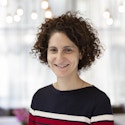
Akshay Venkatesh, Ph.D.
Stanford University
Akshay Venkatesh’s research is in number theory and related fields. A major focus of his recent work has been the topology of locally symmetric spaces, in particular on new phenomena that occur when one leaves the setting of Shimura varieties. In that context, he has postulated, and gathered evidence for, a deep relationship between this topology and the motivic cohomology of certain algebraic varieties. Venkatesh resigned his Investigatorship in 2019 to take a position at the IAS.

2017
Simon Brendle, Ph.D.
Columbia University
Simon Brendle has achieved major breakthroughs in geometry including results on the Yamabe compactness conjecture, the differentiable sphere theorem (joint with R. Schoen), the Lawson conjecture and the Ilmanen conjecture, as well as singularity formation in the mean curvature flow, the Yamabe flow and the Ricci flow.
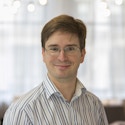
Ludmil Katzarkov, Ph.D.
University of Miami
Ludmil Katzarkov has introduced novel ideas and techniques in geometry, proving long-standing conjectures (e.g., the Shavarevich conjecture) and formulating new conceptual approaches to open questions in homological mirror symmetry, rationality of algebraic varieties and symplectic geometry.
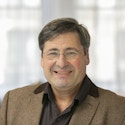
Igor Rodnianski, Ph.D.
Princeton University
Igor Rodnianski is a leading figure in the field of partial differential equations. He has recently proven theorems concerning the full nonlinear dynamics of the Einstein equations, in both the weak and strong field regimes, and has obtained new results regarding gravitational radiation associated to black hole spacetimes.

Allan Sly, Ph.D.
University of California, Berkeley
Allan Sly resolved long-standing open problems on the computational complexity of phase transitions and on the dynamics of the Ising model.

2016
Vladimir Markovic, Ph.D.
University of Oxford
Vladimir Markovic has made fundamental contributions to the theory of three-dimensional manifolds, resolving several long-standing problems, among them the proof of the Thurston conjecture concerning immersed almost-geodesic surfaces in closed hyperbolic three-manifolds.
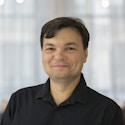
James McKernan, Ph.D.
University of California, San Diego
James McKernan, in collaboration with Caucher Birkar, Paolo Cascini, and Christopher D. Hacon, has established one of the cornerstones of the Minimal Model Program: the finite generation of canonical rings in all dimensions.

Bjorn Poonen, Ph.D.
Massachusetts Institute of Technology
Bjorn Poonen has contributed decisively to many areas revolving broadly around the study of Diophantine equations. Among his achievements are the construction of examples of threefolds without rational points but vanishing local and global obstructions, new heuristics concerning rational points on elliptic curves and results about rational points on curves of higher genus.

2015
Ian Agol, Ph.D.
University of California, Berkeley
Ian Agol has made major contributions to three-dimensional topology and hyperbolic geometry, completing some of Thurston’s problems elucidating the structure of 3-manifolds. He proved several deep and long-standing conjectures, including the Virtual Haken conjecture, the Marden Tameness conjecture and the Simon conjecture.
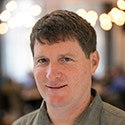
Ben Green, Ph.D.
University of Oxford
Ben Green is an expert in analytic number theory. Among his achievements is the Green–Tao theorem, establishing that primes contain arbitrarily long arithmetic progressions.
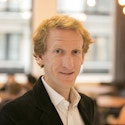
Raphaël Rouquier, Ph.D.
University of California, Los Angeles
Raphaël Rouquier has initiated a new field in mathematics, ‘higher representation theory.’ He constructed novel categories of geometric and representation-theoretic interest and applied these to problems in the theory of finite groups, Lie theory, algebraic geometry and mathematical physics.

Christopher Skinner, Ph.D.
Princeton University
Christopher Skinner works in number theory and arithmetic geometry. One of his striking recent results is a proof, in joint work with collaborators, that a positive proportion of elliptic curves defined over the rational numbers satisfy the Birch–Swinnerton-Dyer conjecture.

2014
Alex Eskin, Ph.D.
University of Chicago
Alex Eskin is a leading geometer with important contributions to geometric group theory, ergodic theory and number theory. He has applied ideas from dynamical systems to solve counting problems in the theory of Diophantine equations, the theory of the mapping class group and mathematical billiards on rational polygons.
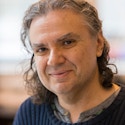
Larry Guth, Ph.D.
Massachusetts Institute of Technology
Larry Guth is a geometer with outstanding contributions to Riemannian geometry, symplectic geometry and combinatorial geometry. In Riemannian geometry, he solved a long-standing problem concerning sharp estimates for volumes of k-cycles. In symplectic geometry, he disproved a conjecture concerning higher-dimensional symplectic invariants by constructing ingenious counterexamples. In combinatorial geometry, he adopted a recent proof of the finite field analog of the Kakeya problem to the Euclidean context. He and Bourgain established the best current bounds to the restriction problem. Extending this work, he and Katz essentially solved one of the most well-known problems in incidence geometry, Erdős’s distinct distance problem, which was formulated in the 1940s.

Richard Kenyon, Ph.D.
Yale University
Richard Kenyon’s central mathematical contributions are in statistical mechanics and geometric probability. He established the first rigorous results on the dimer model, opening the door to recent spectacular advances in the Schramm–Loewner evolution theory. In most recent work, he introduced new homotopic invariants of random structures on graphs, establishing an unforeseen connection between probability and representation theory.

Andrei Okounkov, Ph.D.
Columbia University
Andrei Okounkov’s work spans a wide range of topics at the interface of representation theory, algebraic geometry, combinatorics and mathematical physics. He has made major contributions to enumerative geometry of curves and sheaves, the theory of random surfaces and random matrices. His papers reveal hidden structures and connections between mathematical objects and introduce deep new ideas and techniques of wide applicability.

2013
Ngô Bảo Châu, Ph.D.
University of Chicago
Ngô’s proof of the fundamental lemma, a deep conjecture of Langlands, inaugurated a new geometric approach to problems in harmonic analysis based on arithmetic geometry. His ideas have already inspired work in many areas, including mathematical physics and geometric representation theory.
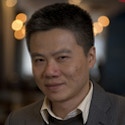
Maryam Mirzakhani, Ph.D.
Stanford University
Mirzakhani’s work was focused on Teichmüller theory and dynamics of natural geometric flows over the moduli space of Riemann surfaces. One of her major results, in joint work with Eskin and Mohammadi, is a proof that stationary measures for the action of SL2(R) on the space of flat surfaces are invariant, a deep and long-standing conjecture.
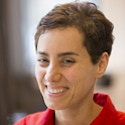
Kannan Soundararajan, Ph.D.
Stanford University
Soundararajan is one of the world’s leaders in analytic number theory and related areas. His work is focused on understanding the zeros and value distribution of L-functions, and on analyzing the behavior of multiplicative functions. In particular, his work (together with co-authors) has led to weak subconvexity bounds for general L-functions and to the proof of the holomorphic quantum unique ergodicity conjecture of Rudnick and Sarnak.
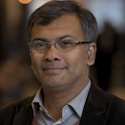
Daniel Tataru, Ph.D.
University of California, Berkeley
Tataru’s work on nonlinear waves has been deep and influential. He proved difficult well-posedness and regularity results for many new classes of equations. This includes geometric evolutions such as wave and Schrödinger maps, quasilinear wave equations, some of which are related to general relativity, as well as other physically relevant models.
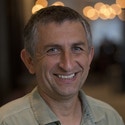
2012
Manjul Bhargava, Ph.D.
Princeton University
Manjul Bhargava pursues algebraic number theory and the geometry of numbers in the tradition of Gauss and Minkowski. Bhargava has inspired an extraordinary resurgence of this field, with wonderful applications. His overarching goal in this work is to count the basic objects of number theory and to make computational conclusions about their asymptotics. For example, it is conjectured that, in a certain natural sense, the average rank of the group of rational points of an elliptic curve defined over the rationals is 1/2. Bhargava and his student Shankar recently showed that it is less than 1. Previously, it was not even known whether the average rank is finite. In joint work with Dick Gross, Bhargava has also shown that the number of rational points on the majority of hyperelliptic curves is bounded by a certain small number independent of the genus of the curve. This work opens up remarkable new vistas in arithmetic and suggests exciting conjectures.
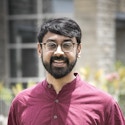
Alice Guionnet, Ph.D.
Massachusetts Institute of Technology
Alice Guionnet has done very important work on the statistical mechanics of disordered systems (and in particular the dynamics and aging of spin glasses), random matrices (with an emphasis on the combinatorics of maps), and operator algebra/free probability. Her work on large deviations for spectra of random matrices has been very influential. She has extended the large deviation principle to the context of Voiculescu’s free probability theory, and in collaboration with Cabanal-Duvillard, Capitaine, and Biane she proved various large deviation bounds in this more general setting. These bounds enabled her to prove an inequality between the two notions of free entropy given by Voiculescu, settling half of the most important question in the field. With her former students M. Maida and E. Maurel-Segala and more recently with Vaughan Jones and D. Shlyakhtenko, Guionnet has studied statistical mechanics on random graphs through multimatrix models. Their work on the general Potts models on random graphs branches out in promising directions within operator algebra theory. Guionnet resigned her Investigatorship in 2016 to move to the École normale supérieure de Lyon in France.
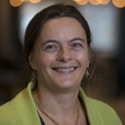
Christopher Derek Hacon, Ph.D.
The University of Utah
Christopher Hacon’s works are among the most important contributions to higher-dimensional algebraic geometry since Mori’s in the 1980s. Hacon and his co-authors have solved major problems concerning the birational geometry of algebraic varieties, including the characterization of irregular varieties, boundedness theorems for pluricanonical maps, a proof of the existence of flips, the completion of the minimal model program for varieties of general type, and bounds for the order of automorphism groups of varieties of general type. His work has also led to solutions of other problems, such as the existence of moduli spaces for varieties of general type and the ascending chain condition for log canonical thresholds.

Paul Seidel, Ph.D.
Massachusetts Institute of Technology
Paul Seidel has done major work in symplectic geometry, in particular on questions inspired by mirror symmetry. His work is distinguished by an understanding of abstract algebraic structures such as derived categories, in sufficiently concrete terms to allow one to derive specific geometric results. On the abstract side, Seidel has made substantial advances towards understanding Kontsevich’s homological mirror symmetry conjecture and has proved several special cases of it. In joint papers with Smith, Abouzaid and Maydanskiy, he has investigated the symplectic geometry of Stein manifolds. In particular, work with Abouzaid constructs infinitely many nonstandard symplectic structures on any Stein manifold of sufficiently high dimension.
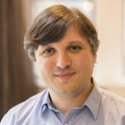
Amit Singer, Ph.D.
Princeton University
Amit Singer works on a broad range of problems in applied mathematics, solving specific applied problems and employing sophisticated theory to allow the solution of general classes of problems. Among the areas to which he has contributed are diffusion maps, cryo-electron microscopy, random graph theory, sensor networks, graph Laplacians, and diffusion processes. His recent work in electron microscopy combines representation theory with a novel network construction to provide reconstructions of structural information on molecules from noisy two-dimensional images of populations of the molecule. He works with a widely varied group of collaborators and graduate students in several disciplines. His work is increasing the range of applicable mathematics. Singer resigned his Math Investigatorship in 2017 to accept the Math+X Investigator award.

Terence Tao, Ph.D.
University of California, Los Angeles
Terry Tao is one of the most universal, penetrating and prolific mathematicians in the world. In over 200 publications (in just 15 years) spanning collaborations with nearly 70 mathematicians, he has established himself as a major player in the disparate fields of harmonic analysis, partial differential equations, number theory, random matrices, and more. He has made deep contributions to the development of additive combinatorics through a blend of harmonic analysis, ergodic theory, geometry and number theory, establishing this field as central to the modern study of many mathematical subjects. This work has led to extraordinary breakthroughs in our understanding of the distribution of primes, expanders in groups, and various questions in theoretical computer science. For example, Green, Tao, and Ziegler have proved that any finite set of linear forms over the integers, of which no two are linearly dependent over the rationals, all take on prime values simultaneously infinitely often, provided there are no local obstructions.
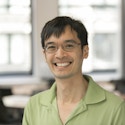
Horng-Tzer Yau, Ph.D.
Harvard University
Horng-Tzer Yau is one of the world’s leading probabilists and mathematical physicists. He has worked on quantum dynamics of many-body systems, statistical physics, hydrodynamical limits, and interacting particle systems. Yau approached the problems of the quantum dynamics of many-body systems with tools he developed for statistical physics and probability. More recently, he has been the main driving force behind some stunning progress on bulk universality for random matrices. With Laszlo Erdős and others, Yau has proven the universality of the local spectral statistics of random matrices, a problem that was regarded as the main challenge of random matrix theory. This argument applies to all symmetry classes of random matrices. In the special Hermitian case, Terence Tao and Van Vu proved bulk universality concurrently. Yau’s work has been extended in many directions, for instance in his recent results on invariant beta ensembles with Paul Bourgade and Laszlo Erdős.
